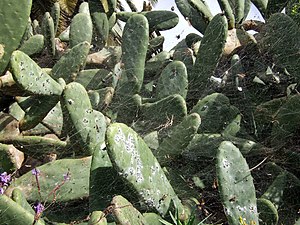My collection has grown and overtaken me! It’s time to offer a few pieces for sale. I have also listed these on eBay, so if you want them please contact me directly to confirm that they are still available.
This bag has a zippered closing, is lined and an internal pocket. It was woven at the Bii Dauu cooperative in Teotitlan del Valle. Bag is 13″ wide x 10″ high.
This gorgeous bag has straps that are braided and attached to the bag with grommets. The green leaf embellishments are sewn with beads. The cochineal ranges from red to deep purple, a gorgeous contrast to the golden yellow derived from wild marigold flowers. This bag is woven by Pastora at La Vida Nueva women’s cooperative.
This lovely bag was woven by my friend Rocio at Casa Santiago. It also has a zippered closure. Handles are high quality leather. The luscious purple color is from the bark of the Palo de Campeche tree. (Photo shows pink, but the color is a softer mauve purple.) The white and grey contrast is from undyed wool. Bag is 10″high x 14″ wide.
These are stunners! Tito just won an award at the Santa Fe International Folk Art Festival this summer and has been invited to be part of a big Vancouver, B.C. folk art festival. Choose one or the other bag (or both, if you please) priced at $125 each. They are woven with 100% wool in the Saltillo style — 20-22 warp threads per inch. Very intricate and labor intensive. These are selling in Oaxaca now for over $200 each. Very collectible. Specify blue or gold diamonds.
Deer, pyramids, turkeys and eagles, and flowers are the design elements on these cotton bags woven on a backstrap loom in Santo Tomas Jalieza by the Navarro Gomez sisters. Price includes two pieces.
Payment: I am happy to send you a PayPal invoice! You can use your charge card or bank account.






















Homage to Dolores Porras
It has been three years since I visited folk art potter Dolores Porras in her village of Santa Maria Atzompa. She was still actively creating decorative pots painted with figures of sirenas (mermaids) with wild hair and tantalizing three dimensional breasts, sculpted figures of madonnas and angels, fanciful pigs and burros. The shelves were packed with stunning pottery and it was difficult to choose which piece I could take home that would be small enough to fit in my suitcase. I was with photographer friends Sam and Tom Robbins from Columbus, Ohio, and my godson Eric Chavez Santiago. There were two inverted pots covered with faces in bas relief. The pots rested on the opening, bottom side up, displaying probably eight of these faces as if they were sisters or multiple personalities. Sam and I each bought one and mine takes center stage on my dining room table, an homage to Dolores Porras.
I had not seen Dolores since, and when I visited her yesterday it was startling to see her wheelchair bound and frail. She told me in a hushed, throaty voice that she has Parkinson’s disease, doesn’t want to eat and is losing her mind. I know Parkinson’s. A good friend in North Carolina has it and I have seen how it eats away at the nervous system, creating memory loss and immobility. I asked Dolores if she was in pain. Her only pain is that she cannot remember and she cannot see much. Are you working? I ask. Can you make your clay? No, she said, I have no strength.
The shelves around the room were bare, only a few of her pieces remain to be sold. I put my arms around her and kiss her forehead and tell her she is a great artist and thank her for her life and her creativity. I give her magic kisses through the air and she kisses me back with her lips pursed, and we are there, two adult women, kissing each other through space and my eyes are wet and I just want to leave the room and sob. This is such a loss of a treasured talent and it is painful to see how this disease robs people of their life’s energy much to early. Dolores is age seventy-three but she looks like one hundred.
Outside, the courtyard walk is lined with piles of discarded, broken figures and plates, imperfect angels. I lift up pieces and hold them between my fingers and discover a face plate made perhaps years ago, and then an angel. Muy viejo (very old) says Dolores’s son. Are they for sale? Yes, he says. I buy these and two extraordinary mermaid urns, the last two. He and I cry. I didn’t need these things, but to me, they are much more — my homage to Dolores Porras.
Like this:
5 Comments
Posted in Cultural Commentary, Oaxaca Mexico art and culture, Travel & Tourism
Tagged blogsherpa, Dolores Porras, Oaxaca folk art, Santa Maria Atzompa